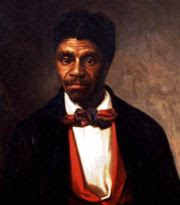Post-election conflict in Kenya

Division created by the 2007 Kenyan presidential election
Riots and armed clashes erupted in Kenya after incumbent Mwai Kibaki was declared winner of the country's presidential elections that took place on December 27, 2007. Supporters of Kibaki's opponent - Raila Odinga - went on a rampage in several parts of the country, burning shacks, shops and cars.
The anger stems from reports that the vote counting was rigged by the electoral commission in Kibaki's favour. Kibaki was sworn in a hastily conducted ceremony at Nairobi State House which was perceived as an attempt to pre-empt demands for a vote recount.
Reports by international observers about manipulations and admissions by members of the electoral commission that their staff obviously provided them with incorrect figures have further fuelled this anger. [1] The violence has been directed mainly against Kikuyus, belonging to the same ethnic group as Kibaki.[2]
The violence against Kikuyus occurred mainly in areas like the Nairobi Slums, Nyanza Province, the Rift Valley and the Coast where opposition against Kibaki is particularly strong.[3] The ethnically diverse Nairobi slums have also seen violence by Kikuyu dominated groups -amongst them the infamous Mungiki- against neighbours hailing from western parts of Kenya. [4]
Timeline
A BBC reporter saw 43 bodies with gunshot wounds in a mortuary in the opposition stronghold of Kisumu. A witness said armed police shot protesters at a rally. There have been running battles in the Nairobi slums. The local KTN television station says 124 have died nationwide in the first two days of unrest.[1][5]
On December 31, 2007, police reported that 40 people were killed in Nairobi and 53 in Kisumu, a major support base for Odinga. Four bodies were discovered in Mathare, in Nairobi, seven people were killed in Nakuru, and four people found dead in a village near Kapsabet.[6]
As the riots grew more and more out of control, workers refused to perform their jobs, and an official curfew has since been declared.
In the Coast Province, various Kikuyu businessmen had their business premises looted and burnt down.[citation needed]
A large rally at which millions were expected to support Odinga, who planned to proclaim himself the "people's president", was planned for January 3 but then postponed to January 8 after police dispersed crowds with tear gas.[7] On January 5th,President Kibaki made known his intention to form a government of national unity.However,the ODM presidential candidate, Raila Odinga,responded by saying that a negotiation with Kibaki as the president would mean that ODM recognised Kibaki's Government as legitimate,which is clearly not the case.
Casualties and displacement
Violent protesters on a street in Nairobi, January 2008
Around 300 people have now died in the post-poll bloodshed. 75,000 have fled, mostly to neighboring Uganda.[8] The largest single loss of life was when a church providing shelter from the violence to 200 people was set alight by rioters, burning 35 people to death.[8] The people who were sheltering were members of President Kibaki's native tribe, the Kikuyu.
Former Olympic athlete Lucas Sang died under unknown circumstances in a riot at Eldoret on January 1.[9] Politician G.G. Njuguna Ngengi was hacked to death in Kuresoi, near Molo, on January 2.[10] On January 3rd,Nobel laureate,Archbishop Desmond Tutu held talks with President Kibaki and Raila Odinga in separate locations.A government spokesperson,Dr Alfred Mutua had initially said that the government was capable of solving its own problems and therefore did not require any foreign mediation.The Kenya government is yet to agree on meeting other foreign dignitaries who have expressed willingness to be part of the mediation process.The Kenyan government has further been criticized for refusing to meet with foreign dignitaries in order to solve the impasse which it has been unable to solve on its own since the elections ended on December 27th.
Reactions
- A government spokesman claimed that Mr Odinga's supporters were "engaging in ethnic cleansing".[8]
- Mr Odinga said Mr Kibaki's camp was "guilty, directly, of genocide"[8] as he called for international mediation. [11]
The kikuyus are largely outnumbered and if ethnic cleansing occurs,they will most probably bear the most brunt as most of the other tribes seem to have formed a formidable force under the political umbrella ODM.At present,approximately 200,000 Kenyans have been displaced due to the clashes and a majority of these people are mainly kikuyus who resided in the Rift Valley province.
References
- ^ a b "Scores Dead in Kenya Poll Clashes", BBC, 2007-12-31. Retrieved on 2007-12-31.
- ^ Jeffrey Gettleman, "Disputed Vote Plunges Kenya Into Bloodshed", The New York Times, December 31, 2007.
- ^ http://news.bbc.co.uk/2/hi/africa/7165602.stm#map
- ^ http://www.abs-cbnnews.com/storypage.aspx?StoryId=104196
- ^ "Kenya: Death and Chaos After Kibaki Win", The Nation (Nairobi), 2007-12-31. Retrieved on 2007-12-31.
- ^ "Election riots worsen in Kenya", Al Jazeera, December 31, 2007.
- ^ http://afp.google.com/article/ALeqM5iJwWD-VW8iTFFDvK61PEYHSPhyKA
- ^ a b c d http://news.bbc.co.uk/2/hi/africa/7167363.stm
- ^ The Standard, January 3, 2008: Poll violence claim former athlete Sang
- ^ The Standard, January 3, 2008: Politician killed in ethnic clashes
- ^ The Standard 3.01.2008 Raila takes the lead in search for a way out
Retrieved from "http://en.wikipedia.org/wiki/Civil_unrest_in_Kenya_%282007%E2%80%93present%29"
Civil unrest in Kenya (2007–present) - Wikipedia, the free encyclopedia



No comments:
Post a Comment